The following WikiProject London Transport biography articles have been selected as representing the scope of the project and are displayed in random rotation on the London transport Portal.
Usage
The template used for the creation of these sub-pages is located at {{Selected article}}
- Add a new Selected biography to the next available subpage.
- Update "end={{LTP anni switch| }}" to new total for its {{Random subpage}} on the main page.
Selected biographies 1
Portal:London transport/Selected biographies/1
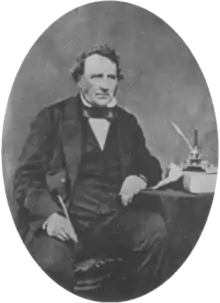
Recognising the growth in the outer suburbs of London and inner city congestion, he proposed the construction of an underground railway through the Fleet valley to Farringdon. His first proposal was that of an atmospheric railway, which was ridiculed, but he continued to campaign throughout the 1840s and 1850s. Various other schemes included a rejected plan for a central railway station to be shared by multiple railway companies. In 1854, a private bill for the Metropolitan Railway between Paddington and Farringdon received assent. Although not a director or shareholder, Pearson's publishing of a pamphlet and continued support eventually convinced the City of London to support for the project.
Pearson died of dropsy on 14 September 1862 at his home at West Hill, Wandsworth, and so was not alive to see the opening of the Metropolitan Railway on 10 January 1863. Pearson had refused the offer of a reward from the railway company, but, shortly after the railway's opening, his widow was granted an annuity of £250 per year. (Full article...)
Selected biographies 2
Portal:London transport/Selected biographies/2
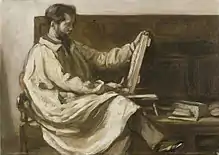
Among his early architectural works at the beginning of the 20th century were Bristol Central Library and British Medical Association building in Strand. From the 1920s to the 1940s Holden was architect for numerous projects for the Underground Electric Railways Company of London and later London Transport. The earliest of Holden's commissions included stations on the southward extension of the Northern line to Morden in 1925-6 and a new company headquarters in 1927-9. The 1930-3 Piccadilly line extensions gave Holden the chance to develop a new type of station. Aiming for a striking and inviting modern appearance, he produced a set of designs based on simple, geometric forms built of brick and concrete. A number of these stations are listed buildings.
Many of Holden's later designs for Underground stations went unrealised or were scaled back because of World War II with only East Finchley representative of a series of stations planned for the cancelled extension of the Northern line to Bushey Heath and with stations on the Central line's extension into east London being scaled back by post-war austerity. Modestly believing that architecture was a joint effort, Holden twice declined the offer of a Knighthood. (Full article...)
Selected biographies 3
Portal:London transport/Selected biographies/3
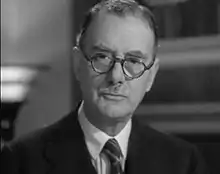
During World War I, Bressey served in the Royal Engineers and spent time in France and Flanders constructing military roads attaining the rank of Lieutenant-Colonel before he left the army in November 1919, when he joined the Ministry of Transport. His 1938 report proposed a series of high capacity motorways radiating outwards from the city and made recommendations for a series of circular routes around the capital and major road improvements in the central area, including tunnels under Kensington Gardens, Victoria Park and Islington High Street and a viaduct from Rotherhithe to Forest Hill. Although World War II delayed the implementation of any of the recommendations, they were subsequently featured in a number of post war reports such as Sir Patrick Abercrombie's County of London Plan and the Greater London Council's 1960s London Ringways scheme and were the origins of plans that were later combined to create London's orbital motorway, the M25. (Full article...)
Selected biographies 4
Portal:London transport/Selected biographies/4
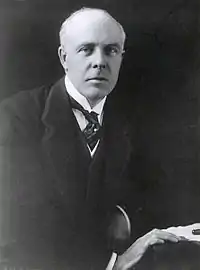
Stanley was born in, Derbyshire, England. In 1880, his family emigrated to Detroit in the United States. In 1888, at the age of 14, Stanley left school and went to work as an office boy at the Detroit Street Railways Company. His abilities were recognised early and Stanley became General Superintendent of the company in 1894. In January 1907 he became general manager of the Underground Electric Railways Company of London (UERL) and after improving the company's fortunes, he became managing director in 1910. In 1914, he was knighted in recognition of his services to transport. After a period as President of the Board of Trade during World War I, Stanley became chairman of the UERL in 1919 and, in 1920, was made Baron Ashfield, of Southwell in the County of Nottingham.
Throughout the 1920s, Stanley and Herbert Morrison worked on plans for a unified transport organisation for London. The London Passenger Transport Board was created in 1933 with Stanley as chairman, a role he performed until 1947, overseeing major expansions of London's Underground network and integration of bus, tram and trolleybus services. (Full article...)
Selected biographies 5
Portal:London transport/Selected biographies/5
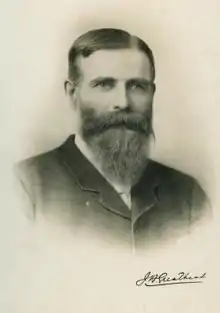
Greathead developed and patented a number of improvements to the Barlow shield and the improved design carried their joint names. Greathead also developed the use of a segmented cast iron lining for the circular tunnel, erected in sections from which the shield was jacked forward. Greathead was then involved in the planning and construction of a number of railways in Britain and Ireland, until, in 1884, he was appointed engineer for the City and South London Railway, the world's first underground electric railway when it opened in 1890. Greathead subsequently worked on the Waterloo and City Railway, the Liverpool Overhead Railway and the early planning of the Central London Railway. (Full article...)
Selected biographies 6
Portal:London transport/Selected biographies/6

Fowler had a busy practice, working on many railway schemes across the country. In 1853, he became chief engineer of the Metropolitan Railway in London, the world's first underground railway. Constructed in shallow "cut-and-cover" trenches beneath city streets, the line opened between Paddington and Farringdon in 1863. Fowler was also engineer for the associated District Railway and the Hammersmith and City Railway.
Later in his career, he was also a consultant with his partner Benjamin Baker and with James Henry Greathead on two of London's first tube railways, the City and South London Railway and the Central London Railway. As part of his railway projects, Fowler designed numerous bridges, including the Grosvenor Bridge, the first railway bridge over the River Thames, the 13-arch Dollis Brook Viaduct for the Edgware, Highgate and London Railway and, most famously, the Forth Railway Bridge for which he was made a baronet. (Full article...)
Selected biographies 7
Portal:London transport/Selected biographies/7
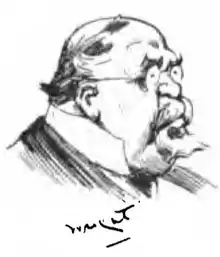
In the 1890s Wright established the London & Globe Finance Corporation (L&GFC) as a method of financing more mining issues. The L&GFC also took over the Baker Street & Waterloo Railway in 1897. In 1899, Wright manipulated the accounts of various L&GFC companies to conceal large losses by one of its mines. The fraud was discovered in December 1900 and the corporation collapsed. In 1904, Wright was sentence to seven years imprisonment at the Royal Courts of Justice, but committed suicide by swallowing cyanide immediately after the verdict was announced. (Full article...)
Selected biographies 8
Portal:London transport/Selected biographies/8
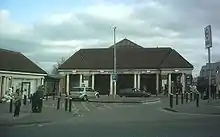
In 1903 Heaps became assistant to Leslie Green the architect for the Underground Electric Railways Company of London (UERL) and aided him in the design of the station buildings for the Baker Street & Waterloo Railway, the Charing Cross, Euston & Hampstead Railway (CCE&HR) and the Great Northern, Piccadilly & Brompton Railway; all distinctive with their striking red glazed terra cotta façades and semi-circular windows at first floor. Following the early death of Green in 1908, Heaps became the UERL's architect. His first independent station designs were for the four new stations on the Bakerloo line extension from Edgware Road Underground station opened in 1913 and 1915; the first stations on the system designed specifically to use escalators rather than lifts.
After World War I, Heaps designed the stations for the 1923-4 extension of the CCE&HR from Golders Green to Edgware, giving them a suburban style in keeping with the new housing developments that were expected to grow around them. After the Edgware extension stations, Heaps concentrated on the design depot buildings, although he designed new stations at Osterley, Boston Manor and St. John's Wood. (Full article...)
Selected biographies 9
Portal:London transport/Selected biographies/9
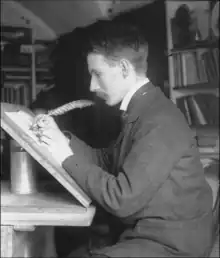
He is most famous for designing the sans-serif Johnston typeface that was used throughout the London Underground system until it was re-designed in the 1980s, as well as the famous roundel symbol used throughout the system.
He has also been credited for reviving the art of modern penmanship and lettering single-handedly through his books and teachings. Johnston also devised the simply crafted round calligraphic handwriting style, written with a broad pen, known as the foundational hand. In 1921, students of Johnston founded the Society of Scribes & Illuminators (SSI), probably the world's foremost calligraphy society. (Full article...)
Selected biographies 10
Portal:London transport/Selected biographies/10
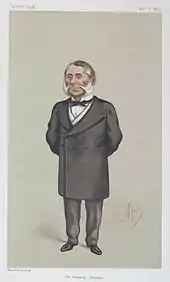
Through his leadership of the MR, SER and MS&LR, Watkin had the amibtion to construct a new mainline railway connecting the north of England, via London and Kent to the continent. Although his plans for a channel tunnel to be constructed by his Anglo-French Submarine Railway were never realised, the MS&LR constructed its London extension in the 1890s from Annesley, Nottinghamshire to the MR's station at Quainton Road in Buckinghamshire to a continental loading gauge. Reflecting its enhanced connections the MS&LR changed its name to the Great Central Railway in 1987.
To encourage tourist day-trips on the MR, Watkin planned a pleasure grounds at Wembley Park, with a large tower, "Watkin's Tower", intended to be larger than the Eiffel Tower. The park opened in 1896, but because of cost and structural problems, the tower was never completed and was demolished after Watkin's death. The site was subsequently used for Wembley Stadium. (Full article...)
Selected biographies 11
Portal:London transport/Selected biographies/11
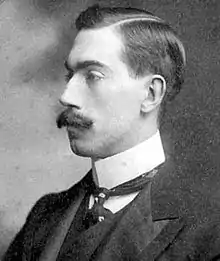
The station buildings were designed to a uniform Arts and Crafts style which was adapted to suit the individual station location and were clad in non-loadbearing ox-blood red glazed terracotta blocks, with the ground floor divided into wide bays by columns and featured large semi-circular windows at first floor level and a heavy dentilated cornice above.
The railways were to open in 1906 and 1907 and the pressure of producing designs and supervising the works to so many stations in such a short period of time, placed a strain on Green's health. He was elected a Fellow of the RIBA in 1907. but died in 1908 at the age of 33. (Full article...)
Selected biographies 12
Portal:London transport/Selected biographies/12
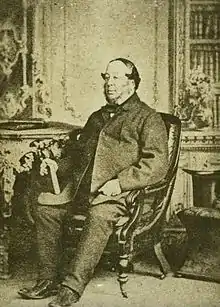
Shillibeer was born in St Marylebone, London, the son of Abraham and Elizabeth Shillibeer. Christened in St Marys Church, St Marylebone on 22 October 1797, Shillibeer worked for the coach company Hatchetts in Long Acre, the coach-building district of the capital. In the 1820s he was offered work in Paris, France where he was commissioned to build some unusually large horse-drawn coaches of "novel design". The aim was to design a coach capable of transporting a whole group of people, perhaps two dozen, at a time.
Shillibeer's design worked, and was very stable. It was introduced into the streets of Paris in 1827 and Shillibeer concluded that operating similar vehicles in London, but for the fare-paying public with multiple stops, would be a paying enterprise, so he returned to his native city. His first London "Omnibus" began service on 4 July 1829 on a route between Paddington (The Yorkshire Stingo) and "Bank" (Bank of England) via the "New Road" (now Marylebone Rd), Somers Town and City Rd. Four services were provided in each direction daily. (Full article...)
Selected biographies 13
Portal:London transport/Selected biographies/13
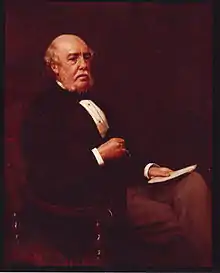
From the mid 1840s until 1857, Barlow was chief engineer for the Midland Railway, after which he set up his on consultancy in London. Between 1862 and 1869 he was the consultant engineer on the Midland Railway's extension from Bedford to London, designing St Pancras station and the 240-foot (73 m) wide cast iron and glass train shed roof over the platforms, the widest unsupported arch in the world at the time.
Barlow was also engineer on the completion of Brunel's Clifton Suspension Bridge in Bristol and sat on the committee which investigated the causes of the Tay Bridge disaster in 1879. He designed the replacement Tay Bridge completed in 1887. In 1880, he was President of the Institution of Civil Engineers. (Full article...)
Selected biographies 14
Portal:London transport/Selected biographies/14
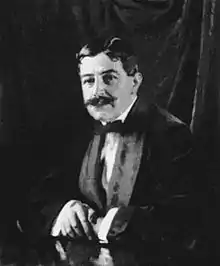
Speyer was a supporter of the musical arts and a friend of several leading composers, including Edward Elgar, Richard Strauss and Claude Debussy. He was chairman of the Classical Music Society for ten years, and he largely funded the Promenade Concerts between 1902 and 1914. His non-musical charitable activities included being honorary treasurer of the fund for Captain Scott's Antarctic expedition. For his philanthropy he was made a baronet in 1906 and a Privy Counsellor in 1909.
After the start of the World War I, he became the subject of anti-German attacks in the Press. In 1915, Speyer offered to resign from the Privy Council and to relinquish his baronetcy, but the Prime Minister turned down the offer. He resigned as chairman of the UERL and went to the United States. In 1921, the British government investigated accusations that Speyer had traded with the enemy during the war, and had participated in other wartime conduct incompatible with his status as a British subject. Speyer denied the charges, but his naturalisation was revoked and he was struck off the list of members of the Privy Council. (Full article...)
Selected biographies 15
Portal:London transport/Selected biographies/15
.jpg.webp)
Pick was described by architectural historian Nikolaus Pevsner as "the greatest patron of the arts whom this century has so far produced in England, and indeed the ideal patron of our age." Pick's interest in design extended beyond his own organisation and he was a founding member and later served as President of the Design and Industries Association. He was also the first chairman of the Council for Art and Industry. He is commemorated with a memorial at Piccadilly Circus station, a blue plaque at his home in Highgate and with Frank Pick House, a London Underground engineering facility near Acton Town station. (Full article...)
Selected biographies 16
Portal:London transport/Selected biographies/16

In September 1900, he became involved in underground railways in London, buying the unbuilt Charing Cross, Euston and Hampstead Railway. In 1902, he established the Underground Electric Railways Company of London (UERL) which bought a number tube railway companies which had not been able to find finance. Money was quickly raised using complex financial instruments and the UERL built and opened four tube lines by 1907. Yerkes died in December 1905 shortly before the first of these, the Baker Street and Waterloo Railway, opened in March 1906. Through subsequent acquisition and expansion, the UERL became the core of the London Underground and London's main bus operator.
In addition to his railway's in London and Chicago, Yerkes is remembered through the Yerkes Observatory in Wisconsin and the Yerkes crater on the Moon. (Full article...)
Selected biographies 17
Portal:London transport/Selected biographies/17
_Patrick_Abercrombie_-_NPG_x82059.jpg.webp)
Abercrombie is best known for the post-Second World War replanning of London and other British and international cities. He created the County of London Plan (1943) and the Greater London Plan (1944) which are commonly referred to as the Abercrombie Plan. The two plans proposed widespread reconstruction and replanning of the city and the urban areas of the surrounding counties and road and rail infrastructure including the construction of a series of concentric ring roads and underground rail loops to connect main line stations below ground to replace surface routes. (Full article...)
Selected biographies 18
Portal:London transport/Selected biographies/18
.jpg.webp)
Rennie designed many canals, bridges and docks around the United Kingdom and Ireland as well as harbours and lighthouses.
Amongst the projects designed by Rennie in London were previous versions of Vauxhall Bridge, Waterloo Bridge, Southwark Bridge and London Bridge and the London, East India and West India Docks.
After his death, Rennie's sons George and John founded the engineering company J. and G. Rennie. (Full article...)
Selected biographies 19
Portal:London transport/Selected biographies/19

Beck's approach to the map was to remove all geographical content except the River Thames so that the focus could be on the arrangement of lines and stations and to enable the central area to be expanded map. Beck first submitted his idea to Frank Pick in 1931 but it was considered too radical because it didn't show relative distances between stations. After a successful trial of 500 copies in 1932, distributed via a select few stations, the map was given its first full publication in 1933 (700,000 copies). It was immediately popular, and the Underground has used topological maps to illustrate the network ever since.
Beck's contribution to the visual style of London Underground is recognised with a plaque at what was his local Underground station, Finchley Central; with a blue plaque at his birth place in Leyton and the Beck Gallery at the London Transport Museum. (Full article...)
Selected biographies 20
Portal:London transport/Selected biographies/20
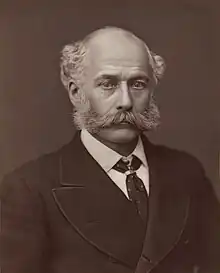
Bazelgette was also responsible for the design of the Albert, Victoria and Chelsea Embankments along the north and south sides of the River Thames and bridges over the Thames at Putney, Hammersmith and Battersea. He also prepared early proposals for Blackwall Tunnel and Tower Bridge. (Full article...)